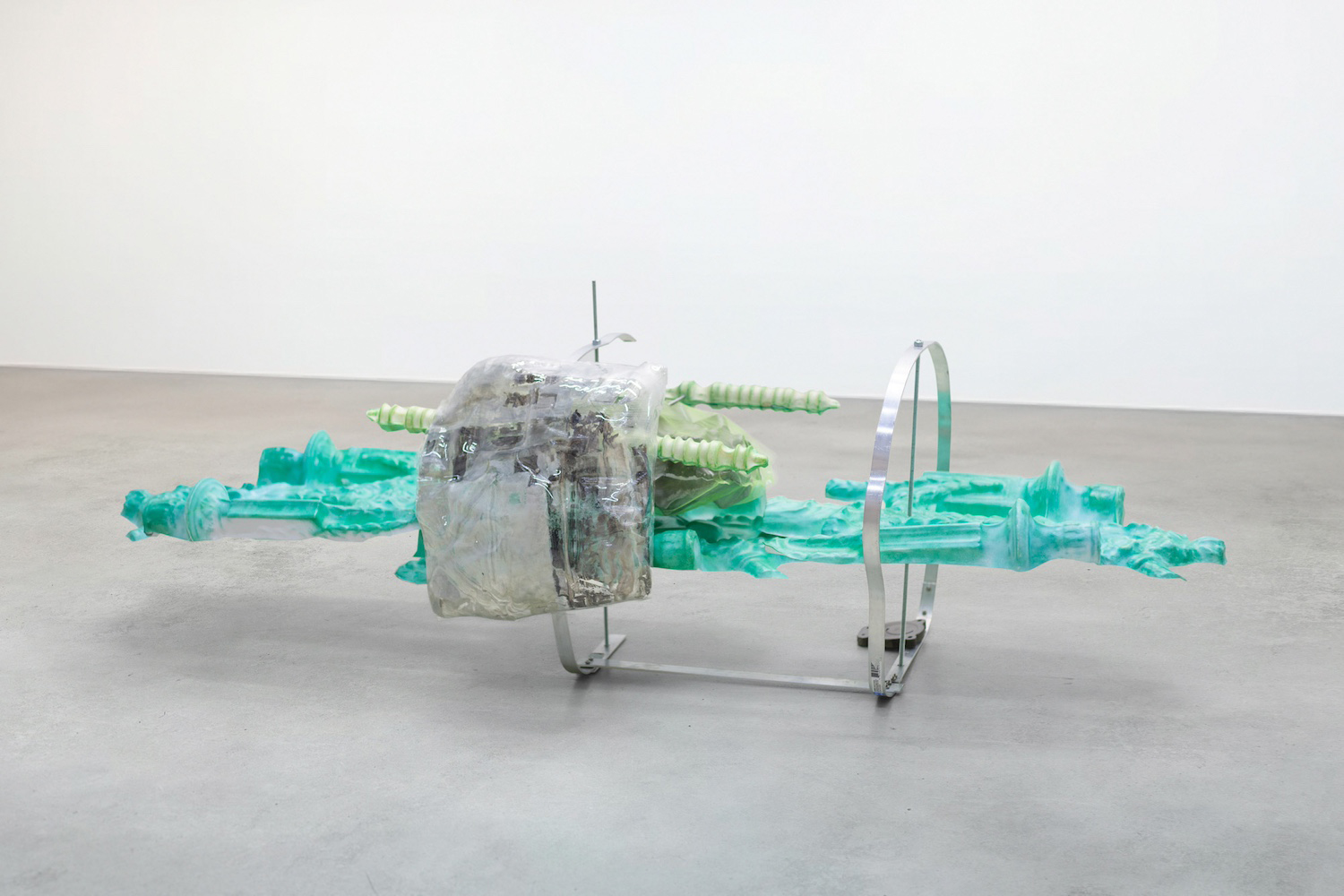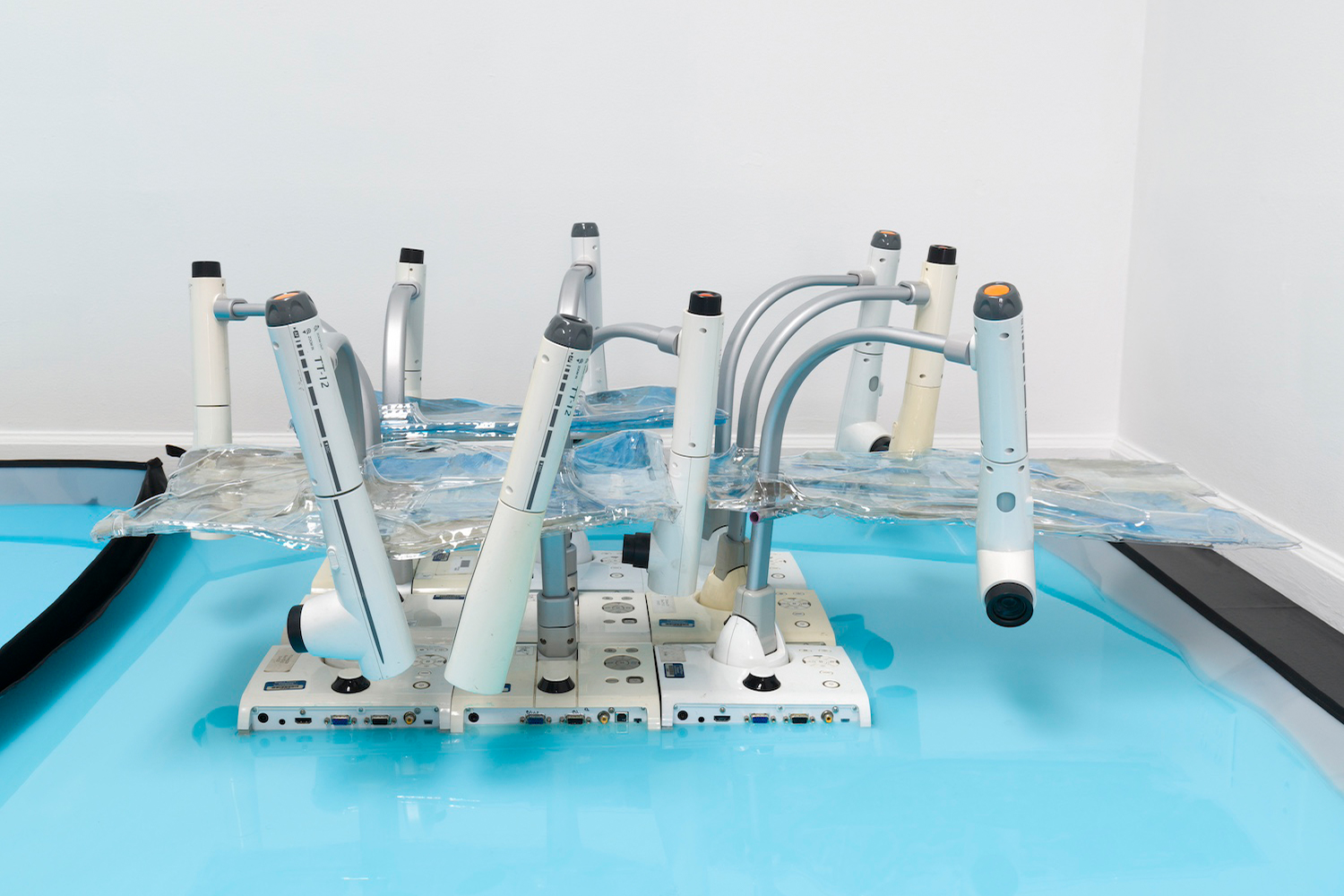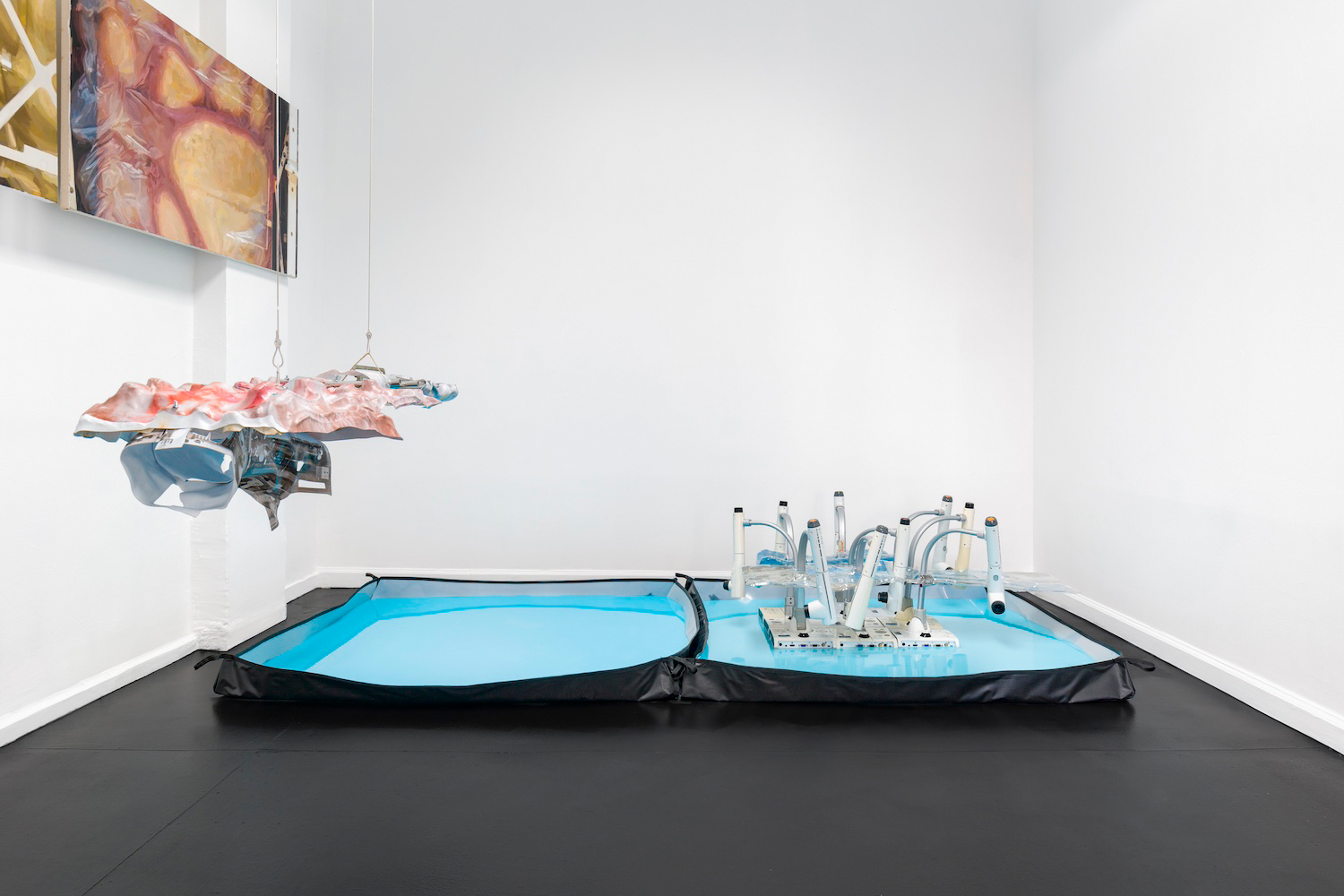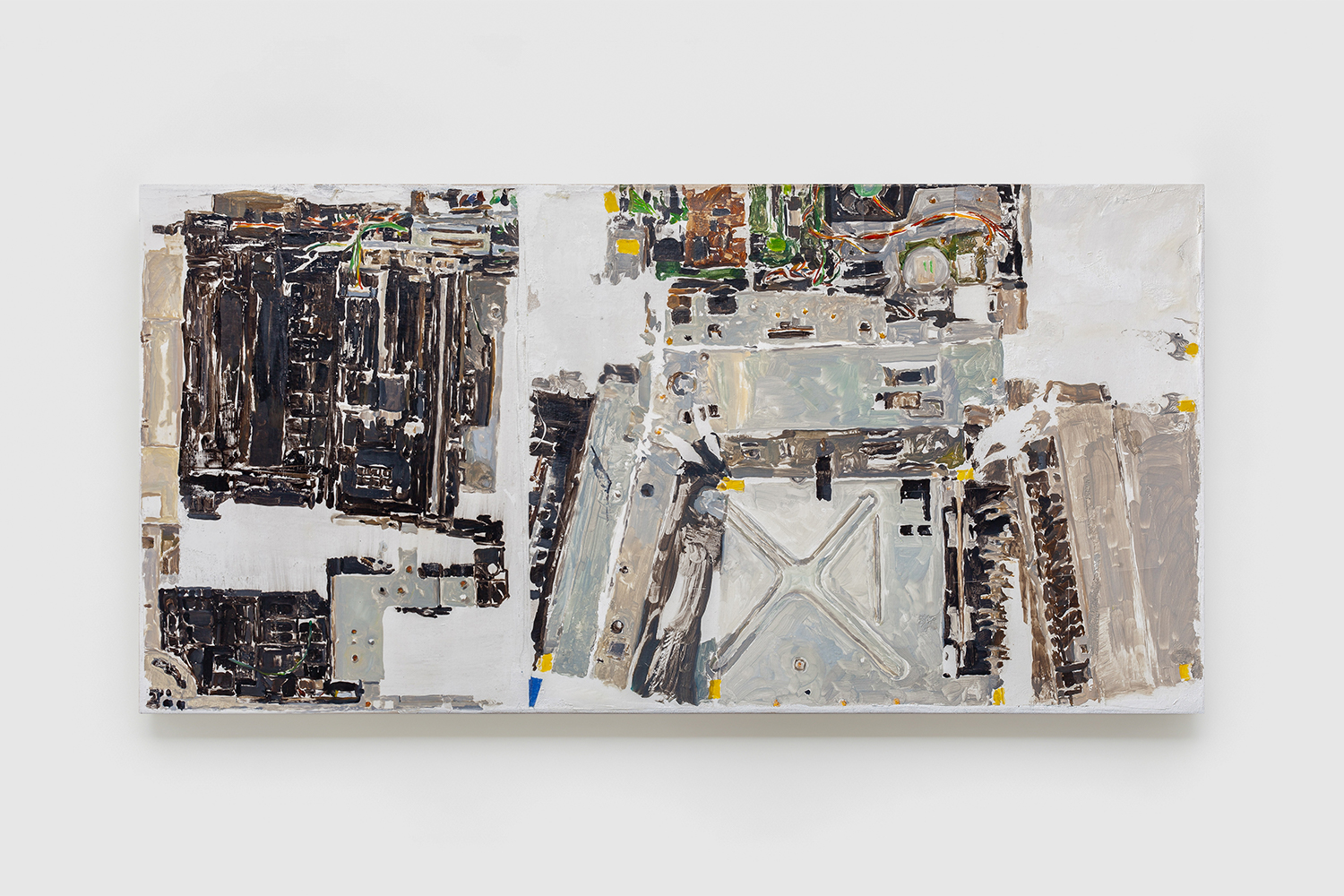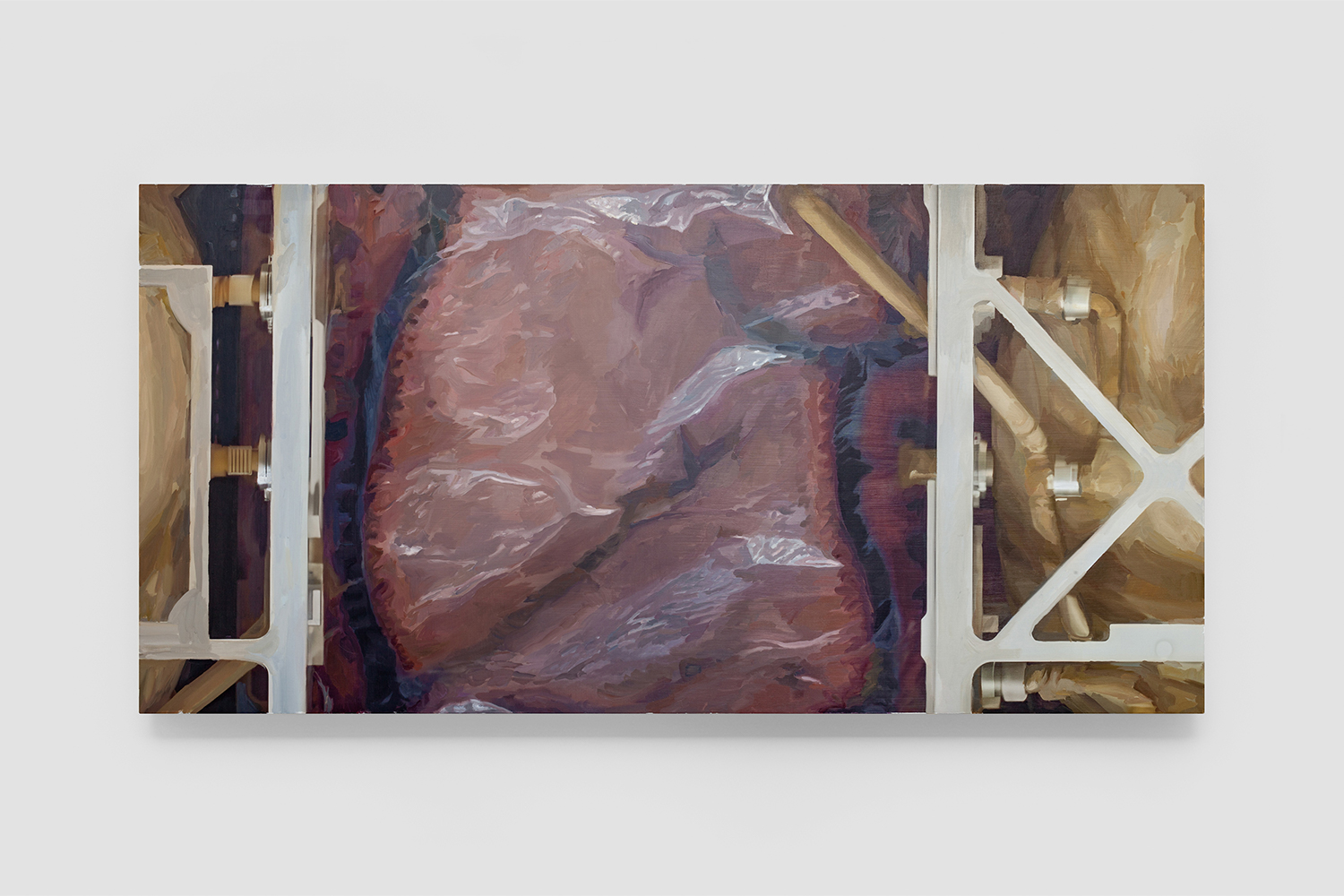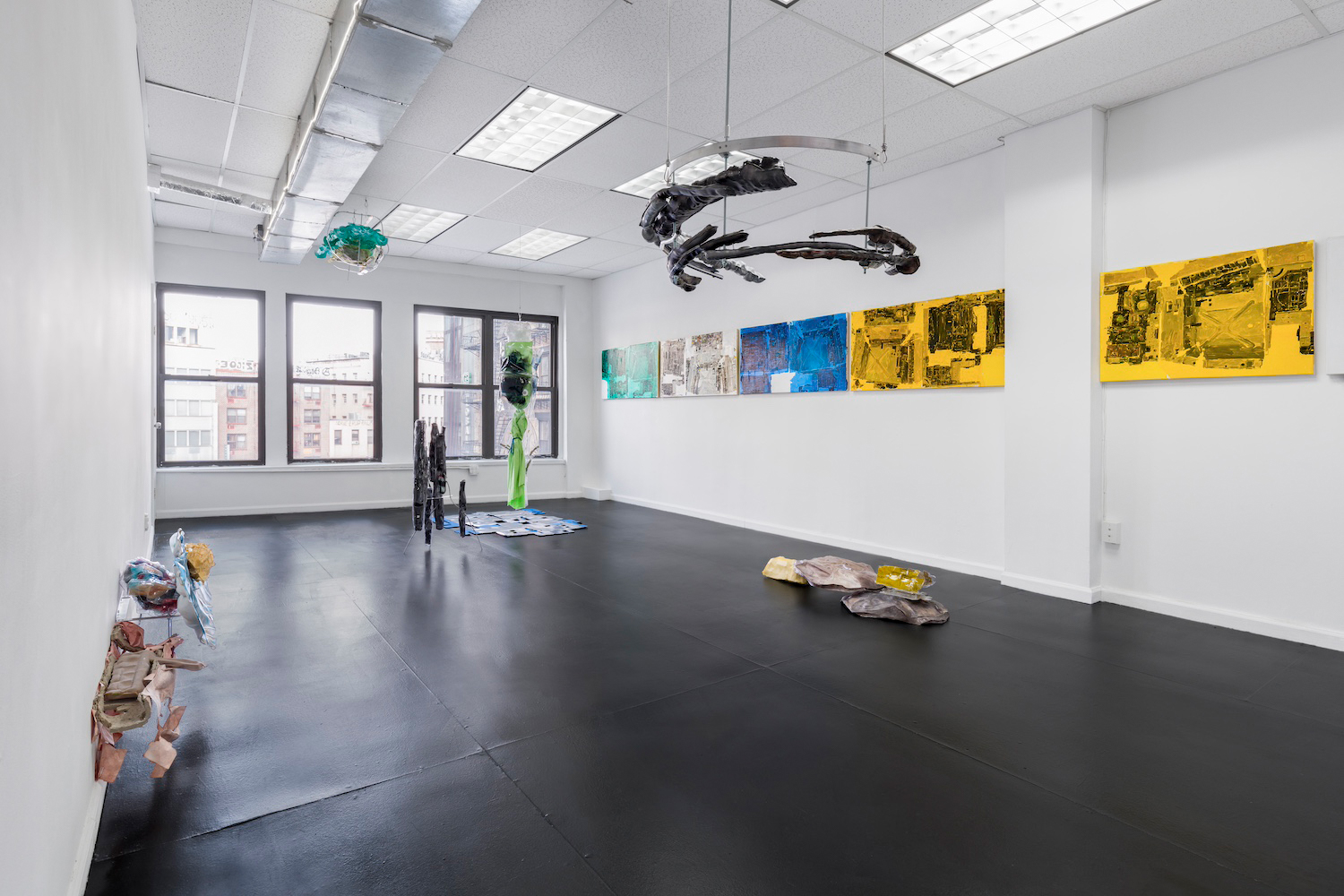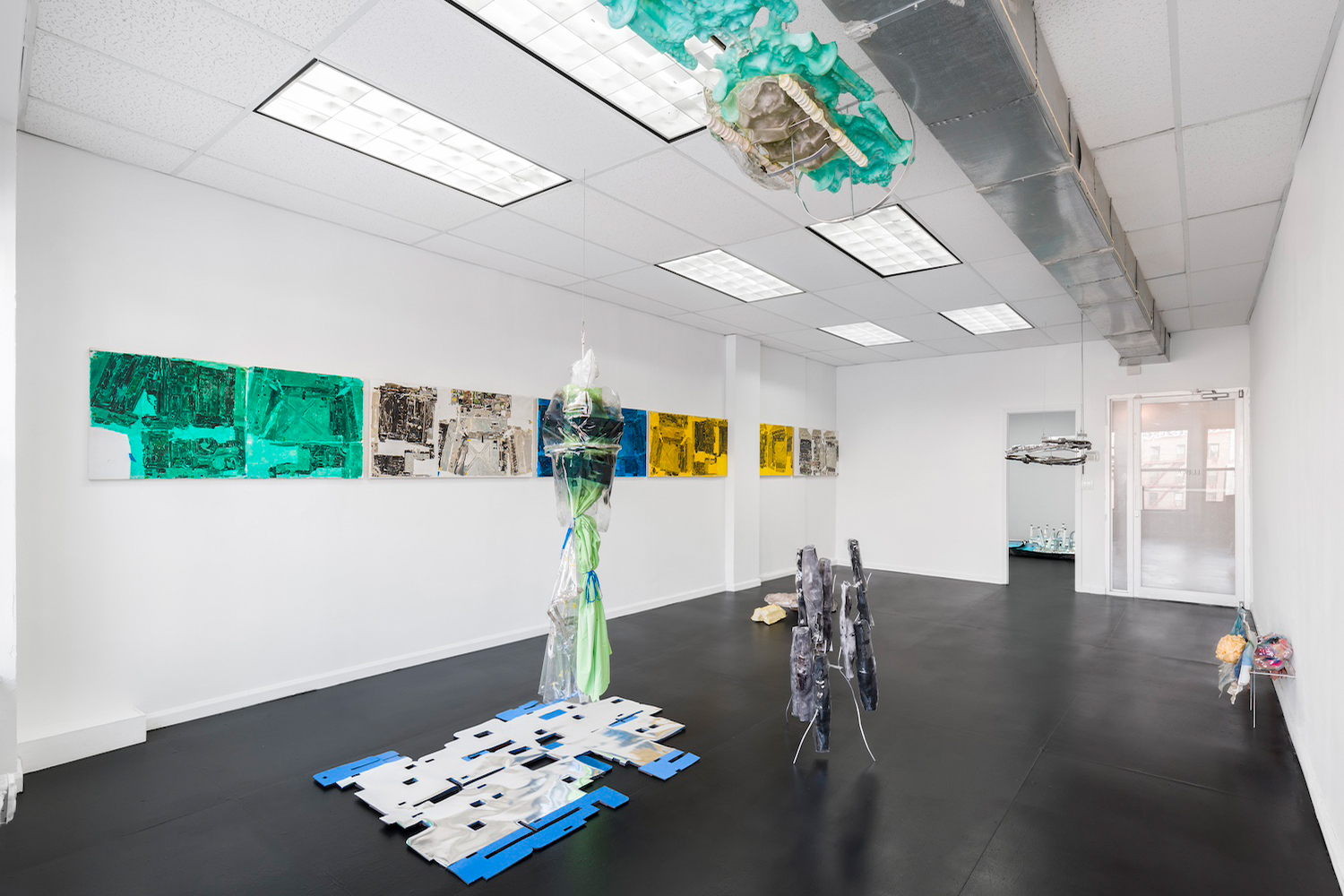Developed to transfer documents via telephone, the fax machine (facsimile) scans and transmits material that results in a copy of a different medium. While dominant technologies have led to its decline, regulatory requirements have sustained faxing technology in specific industries, such as financial, legal, healthcare, and governmental sectors that rely on its use.
Bryce Kroll’s first New York solo exhibition, “Hard Copy,” is bracketed by this not-yet-obsolete technology. Kroll began by purchasing six Panafax UF885 fax machines from an auction at the New York Mayor’s Office for next to nothing. The Panafax UF885 serves as the source material, anchoring an eclectic body of work that ranges in medium and method, as most of the checklist is derived from the machines.
Anthropomorphic in arrangement, Kroll’s sculptures are extra-terrestrial, with moments of prosthesis in between. Two distinct series of paintings accompany the eight sculptures, a diversion from previous presentations. Kroll’s approach to materialism is forensic, even surgical, in its precision. Amalgamated sculptures cling low to the room’s edge, some hanging at varied heights and with offset justification, implicating the body to bend low or strain upward; some contorted, some limp, sucked of oxygen and obscured by fabric, each exaggerated and warped from origin, like an animal playing dead or lying dormant.
Many commercial and clinical materials are acquired from institutions/suppliers, evoking a kind of civic transparency, tactfully weaving municipal and governmental refuse from structural systems that shape everyday life in New York and beyond. Like lifeless informational organisms, the sculptures cling to the floor and creep up the wall, depicting the thing and its subsequent function as a new form.
Kroll created a vacuum-forming machine to produce smooth surfaces that encase objects. He uses oil-soluble colorants or laser-printed, AI-generated images to induce voluntary color change, expanding pigment cells like a chameleon. What was it you wanted? (2023) hangs at eye level, made of styrene (a thermoplastic derived from a colorless, highly volatile flammable liquid, which has a sweet odor), oil-soluble colorants, aluminum, polyurethane foam, and hardware, while Curved Candelabra Panafax UF885 derivative (2023) looms overhead, hung high and made of PET-G, (a durable thermoplastic polyester) a vacuum pump gasket and organza. Twin Panafax UF885 derivative (2023) hugs the gallery baseboard, dyed pink, blue, and yellow, made of Tyvek, vacuum parts, upholstery, waste fabric, and wood, among others.
Kroll’s paintings are physical reproductions of data, made by painting directly onto a machine encased in transparent PVC and transferring the resulting “skin” to canvas, similar to the industrial technique of vacuum forming and molding objects with molten plastic sheets that produce a physical replica of the original. The paintings in the Hard Times (2024) series are tacky and slick, with oil on top of pigment printed on synthetic canvas, where technical renderings meet the artist’s hand. The paintings are offset and wrapped around the back room. The others are hung closely together in a row in the main room, with titles like .76 Inches Per Minute (Panafax UF885) (2023) and .85 Inches Per Minute (Panafax UF885) (2023), which are all made of oil and resin on canvas.
“Hard Copy” is a frenetic and complex exercise in taking apart and putting back together, where transfer paintings and vacuum-formed facsimiles articulate reproduction and repetition. Kroll successfully folds the language of logic and technical processing into abstraction, citing the play within perversion through relics of the clerical past met with the contemporary poetics of objecthood, assemblage, and reinterpretation.

